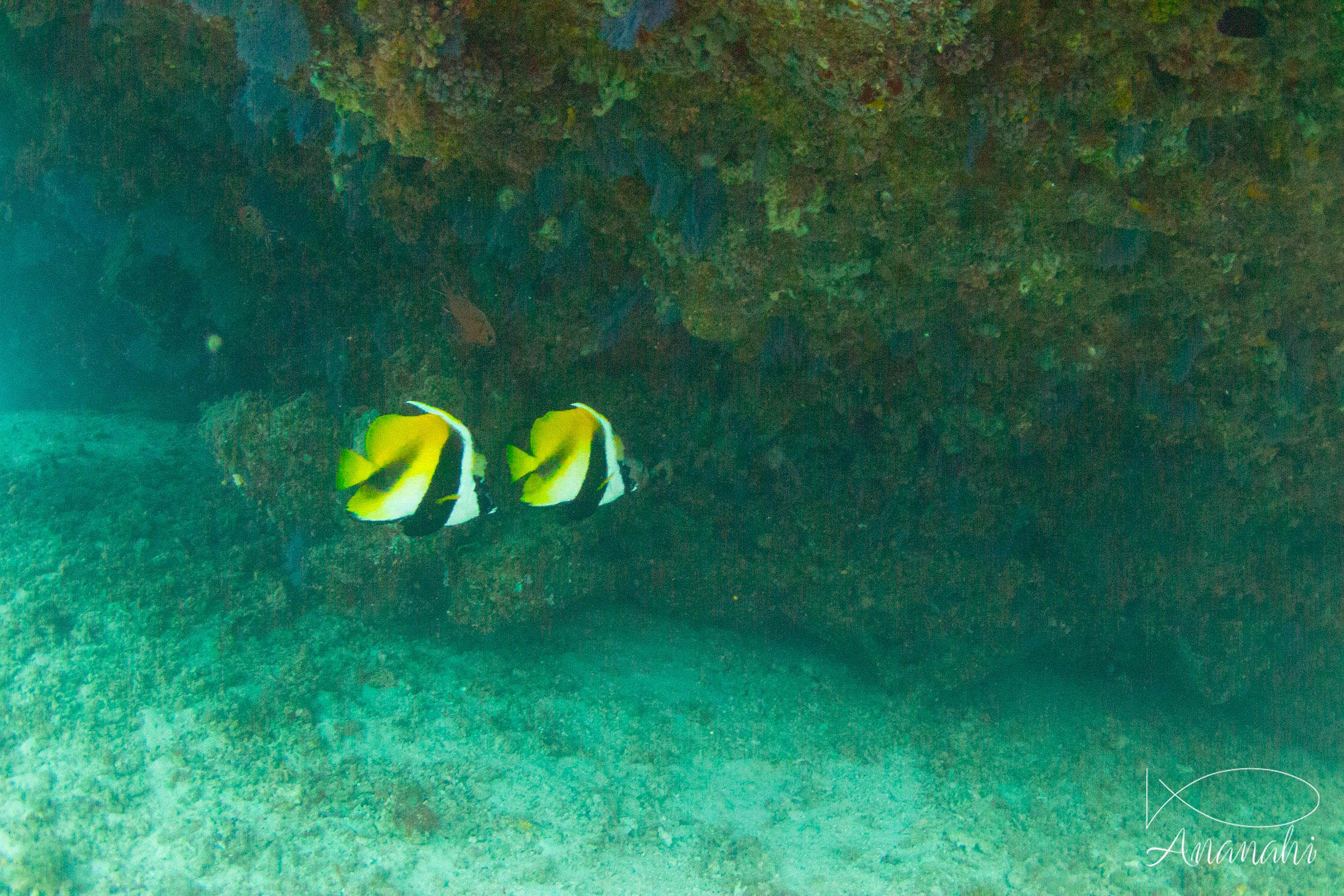
Scientific name: Heniochus monoceros
Size: Up to 9.9 inches
Color: White, yellow, black
Distinguishing feature: 3 black bands, first one goes down from the beginning of the dorsal fin to the mouth, including the face of the animal. However, it leaves a yellow spot on the forehead. The pectoral fins, anal and the back of the dorsal are yellow.
Where did we see it: Bali and Gili, Zanzibar, French polynesia, Mayotte, Raja Ampat

Scientific name: Heniochus monoceros
Size: Up to 9.9 inches
Color: White, yellow, black
Distinguishing feature: 3 black bands, first one goes down from the beginning of the dorsal fin to the mouth, including the face of the animal. However, it leaves a yellow spot on the forehead. The pectoral fins, anal and the back of the dorsal are yellow.
Where did we see it: Bali and Gili, Zanzibar, French polynesia, Mayotte, Raja Ampat
Juveniles are solitary while adults live in pairs. However some shoals are visible, so they can regroup in greater numbers.
Its name comes from the first black stripe including the face, which looks like a mask.
Parrotfish create a protective envelope around them when they are sleeping.
So, don't put the light on them during night dive to don't to wake them up and break this envelope.
Some sharks can stay motionless on the sand (white tips reef sharks, nurse sharks, etc.).
These sharks don't have to swim to bring oxygen to their gills like other sharks (grey, hammerheads tc.)
The tiger shark has slender marks similars to the lines of tigers, hence its name.
When it is juvenile, these marks are round and not vertical. They change when it grows.